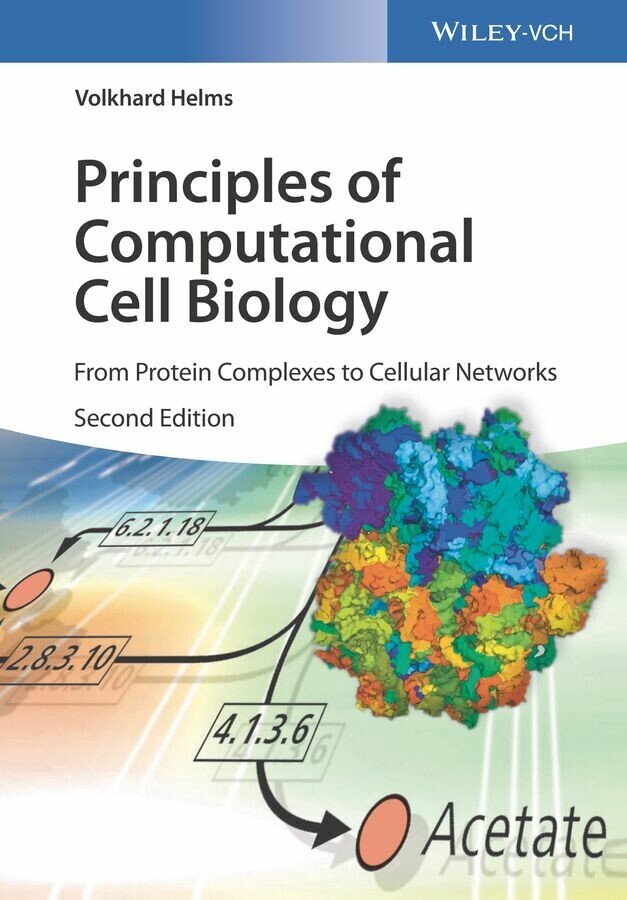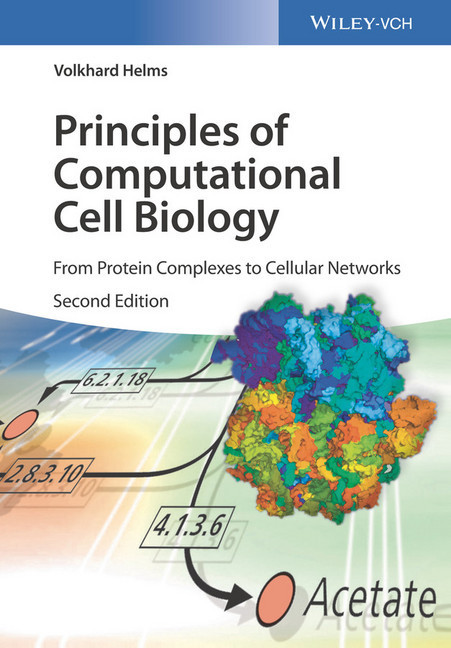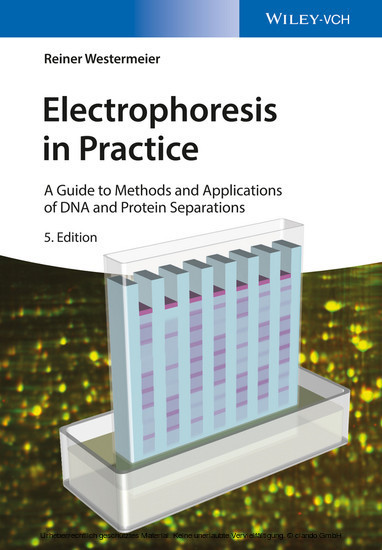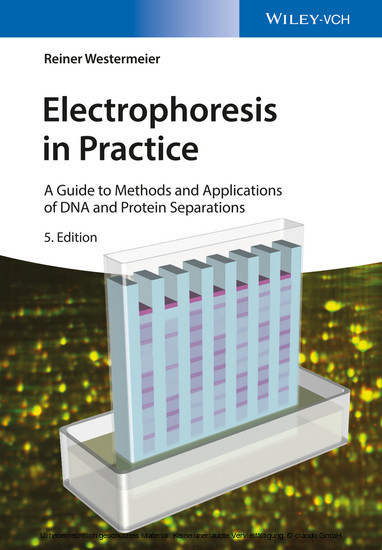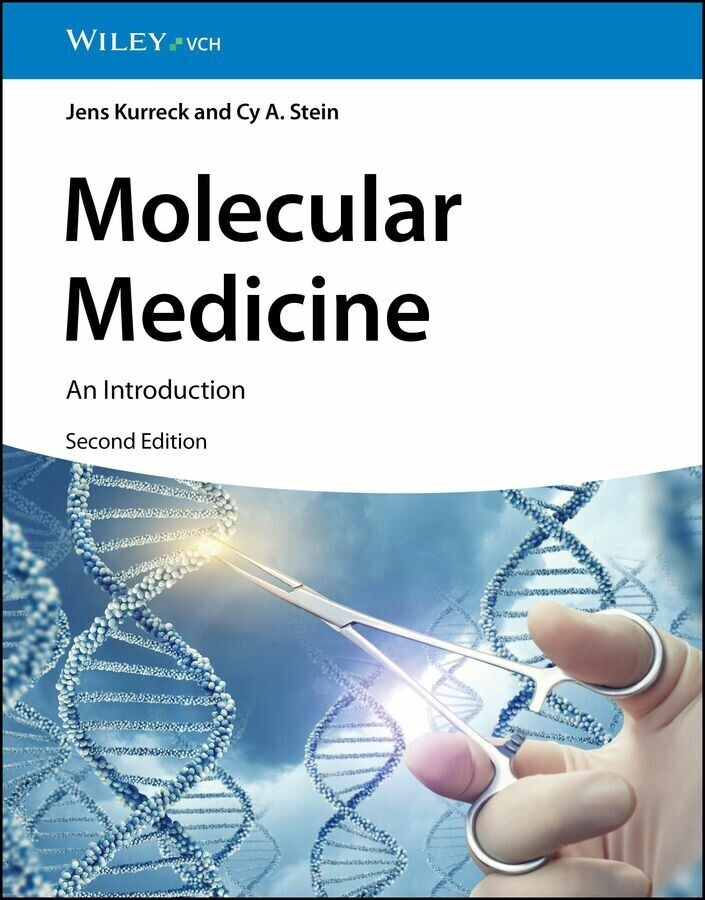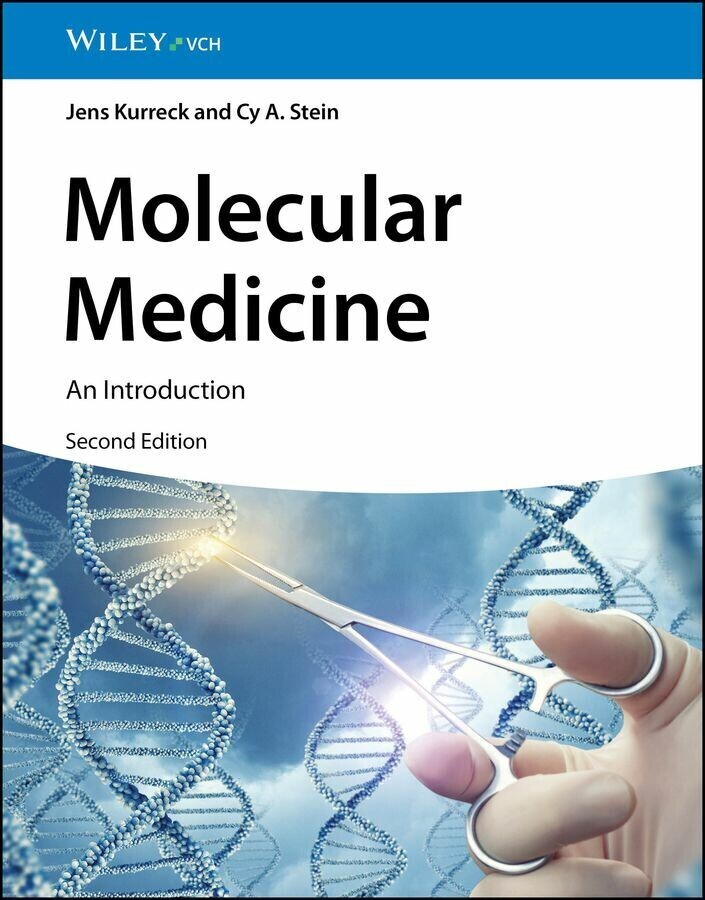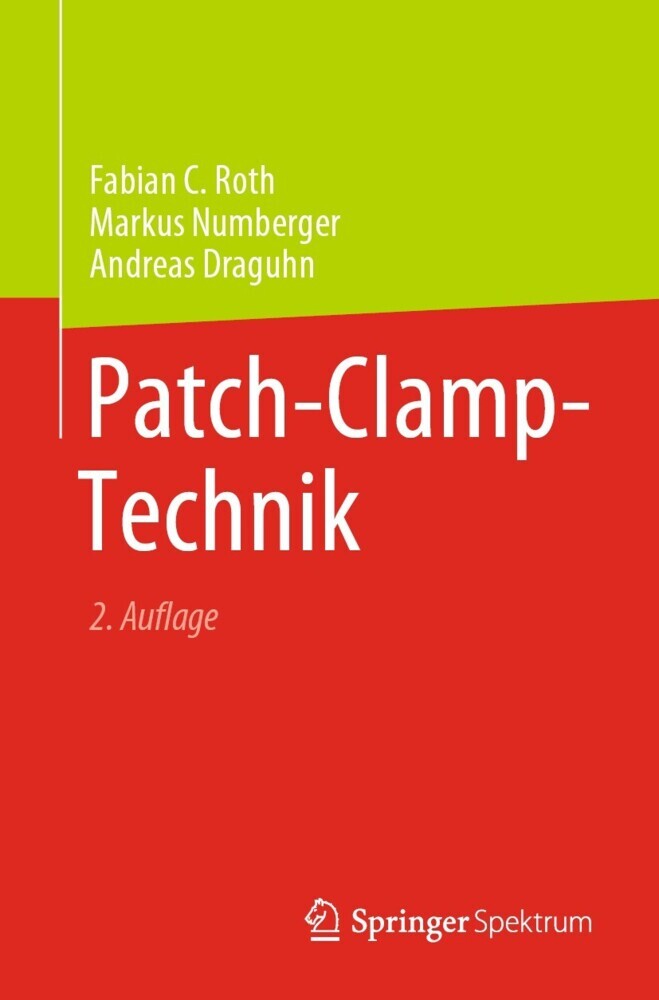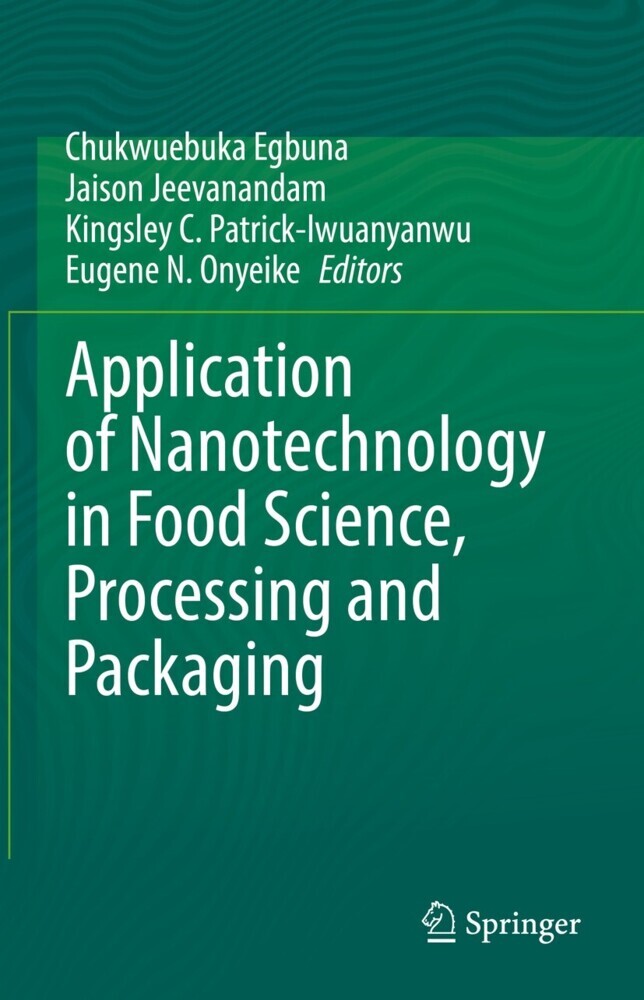Principles of Computational Cell Biology
From Protein Complexes to Cellular Networks
Computational cell biology courses are increasingly obligatory for biology students around the world but of course also a must for mathematics and informatics students specializing in bioinformatics. This book, now in its second edition is geared towards both audiences. The author, Volkhard Helms, has, in addition to extensive teaching experience, a strong background in biology and informatics and knows exactly what the key points are in making the book accessible for students while still conveying in depth knowledge of the subject.About 50% of new content has been added for the new edition. Much more room is now given to statistical methods, and several new chapters address protein-DNA interactions, epigenetic modifications, and microRNAs.
Volkhard Helms, PhD is a full professor of bioinformatics at Saarland University. He has authored more than 100 scientific publications and received the EMBO Young Investigator Award in 2001.
Volkhard Helms, PhD is a full professor of bioinformatics at Saarland University. He has authored more than 100 scientific publications and received the EMBO Young Investigator Award in 2001.
1;Cover;1 2;Title Page;5 3;Copyright;6 4;Contents;7 5;Preface of the First Edition;17 6;Preface of the Second Edition;19 7;Chapter 1 Networks in Biological Cells;21 7.1;1.1 Some Basics About Networks;21 7.1.1;1.1.1 Random Networks;22 7.1.2;1.1.2 Small?World Phenomenon;22 7.1.3;1.1.3 Scale?Free Networks;23 7.2;1.2 Biological Background;24 7.2.1;1.2.1 Transcriptional Regulation;25 7.2.2;1.2.2 Cellular Components;25 7.2.3;1.2.3 Spatial Organization of Eukaryotic Cells into Compartments;27 7.2.4;1.2.4 Considered Organisms;28 7.3;1.3 Cellular Pathways;28 7.3.1;1.3.1 Biochemical Pathways;28 7.3.2;1.3.2 Enzymatic Reactions;31 7.3.3;1.3.3 Signal Transduction;31 7.3.4;1.3.4 Cell Cycle;32 7.4;1.4 Ontologies and Databases;32 7.4.1;1.4.1 Ontologies;32 7.4.2;1.4.2 Gene Ontology;33 7.4.3;1.4.3 Kyoto Encyclopedia of Genes and Genomes;33 7.4.4;1.4.4 Reactome;33 7.4.5;1.4.5 Brenda;34 7.4.6;1.4.6 DAVID;34 7.4.7;1.4.7 Protein Data Bank;35 7.4.8;1.4.8 Systems Biology Markup Language;35 7.5;1.5 Methods for Cellular Modeling;37 7.6;1.6 Summary;37 7.7;1.7 Problems;37 7.8;Bibliography;38 8;Chapter 2 Structures of Protein Complexes and Subcellular Structures;41 8.1;2.1 Examples of Protein Complexes;42 8.1.1;2.1.1 Principles of Protein-Protein Interactions;44 8.1.2;2.1.2 Categories of Protein Complexes;47 8.2;2.2 Complexome: The Ensemble of Protein Complexes;48 8.2.1;2.2.1 Complexome of Saccharomyces cerevisiae;48 8.2.2;2.2.2 Bacterial Protein Complexomes;50 8.2.3;2.2.3 Complexome of Human;51 8.3;2.3 Experimental Determination of Three?Dimensional Structures of Protein Complexes;51 8.3.1;2.3.1 X?ray Crystallography;52 8.3.2;2.3.2 NMR;54 8.3.3;2.3.3 Electron Crystallography/Electron Microscopy;54 8.3.4;2.3.4 Cryo?EM;54 8.3.5;2.3.5 Immunoelectron Microscopy;55 8.3.6;2.3.6 Fluorescence Resonance Energy Transfer;55 8.3.7;2.3.7 Mass Spectroscopy;56 8.4;2.4 Density Fitting;58 8.4.1;2.4.1 Correlation?Based Density Fitting;58 8.5;2.5 Fourier Transformation;60 8.5.1;2.5.1 Fourier Series;60 8.5.2;2.5.2 Continuous Fourier Transform;61 8.5.3;2.5.3 Discrete Fourier Transform;61 8.5.4;2.5.4 Convolution Theorem;61 8.5.5;2.5.5 Fast Fourier Transformation;62 8.6;2.6 Advanced Density Fitting;64 8.6.1;2.6.1 Laplacian Filter;65 8.7;2.7 FFT Protein-Protein Docking;66 8.8;2.8 Protein-Protein Docking Using Geometric Hashing;68 8.9;2.9 Prediction of Assemblies from Pairwise Docking;69 8.9.1;2.9.1 CombDock;69 8.9.2;2.9.2 Multi?LZerD;72 8.9.3;2.9.3 3D?MOSAIC;72 8.10;2.10 Electron Tomography;73 8.10.1;2.10.1 Reconstruction of Phantom Cell;75 8.10.2;2.10.2 Protein Complexes in Mycoplasma pneumoniae;75 8.11;2.11 Summary;76 8.12;2.12 Problems;77 8.12.1;2.12.1 Mapping of Crystal Structures into EM Maps;77 8.13;Bibliography;80 9;Chapter 3 Analysis of Protein-Protein Binding;83 9.1;3.1 Modeling by Homology;83 9.2;3.2 Properties of Protein-Protein Interfaces;86 9.2.1;3.2.1 Size and Shape;86 9.2.2;3.2.2 Composition of Binding Interfaces;88 9.2.3;3.2.3 Hot Spots;89 9.2.4;3.2.4 Physicochemical Properties of Protein Interfaces;91 9.2.5;3.2.5 Predicting Binding Affinities of Protein-Protein Complexes;92 9.2.6;3.2.6 Forces Important for Biomolecular Association;93 9.3;3.3 Predicting Protein-Protein Interactions;95 9.3.1;3.3.1 Pairing Propensities;95 9.3.2;3.3.2 Statistical Potentials for Amino Acid Pairs;98 9.3.3;3.3.3 Conservation at Protein Interfaces;99 9.3.4;3.3.4 Correlated Mutations at Protein Interfaces;103 9.4;3.4 Summary;106 9.5;3.5 Problems;106 9.6;Bibliography;106 10;Chapter 4 Algorithms on Mathematical Graphs;109 10.1;4.1 Primer on Mathematical Graphs;109 10.2;4.2 A Few Words About Algorithms and Computer Programs;110 10.2.1;4.2.1 Implementation of Algorithms;111 10.2.2;4.2.2 Classes of Algorithms;112 10.3;4.3 Data Structures for Graphs;113 10.4;4.4 Dijkstra's Algorithm;115 10.4.1;4.4.1 Description of the Algorithm;116 10.4.2;4.4.2 Pseudocode;120 10.4.3;4.4.3 Running Time;121 10.5;4.5 Minimum Spanning Tree;121 10.5.1;4.5.1 Kruskal's Algorithm;122 10.6;4.6 Graph Drawing;122 10.7;4
Helms, Volkhard
| ISBN | 9783527810338 |
|---|---|
| Artikelnummer | 9783527810338 |
| Medientyp | E-Book - PDF |
| Auflage | 2. Aufl. |
| Copyrightjahr | 2018 |
| Verlag | Wiley-VCH |
| Umfang | 464 Seiten |
| Sprache | Englisch |
| Kopierschutz | Adobe DRM |

